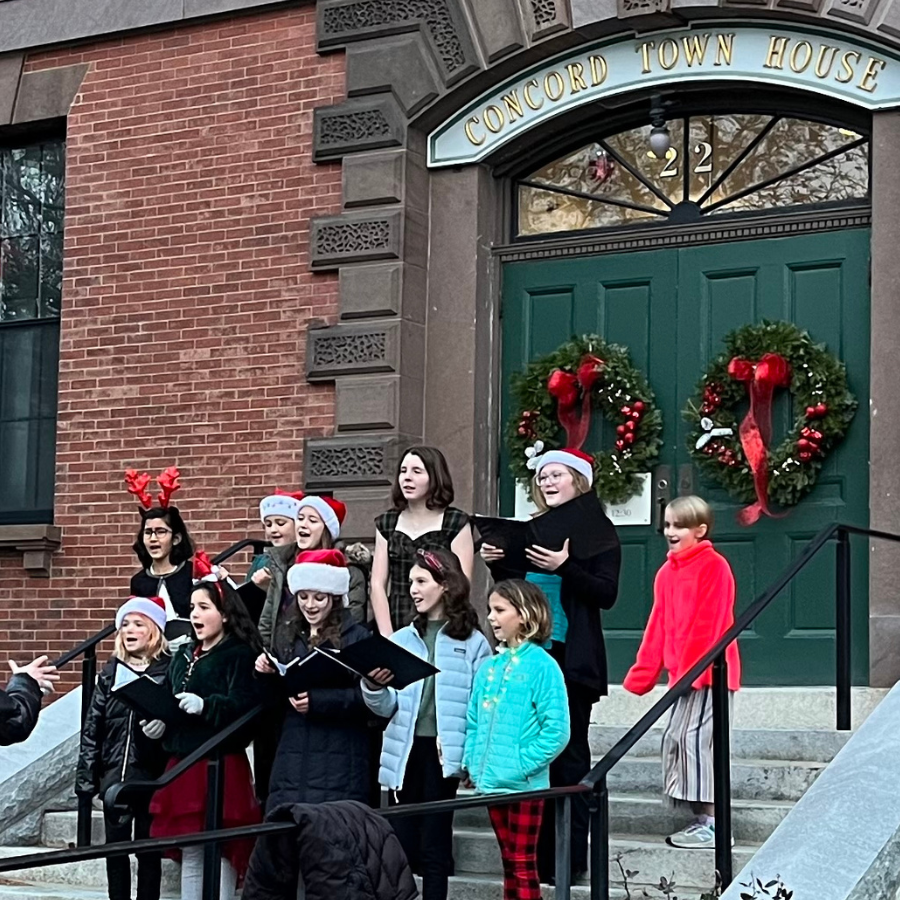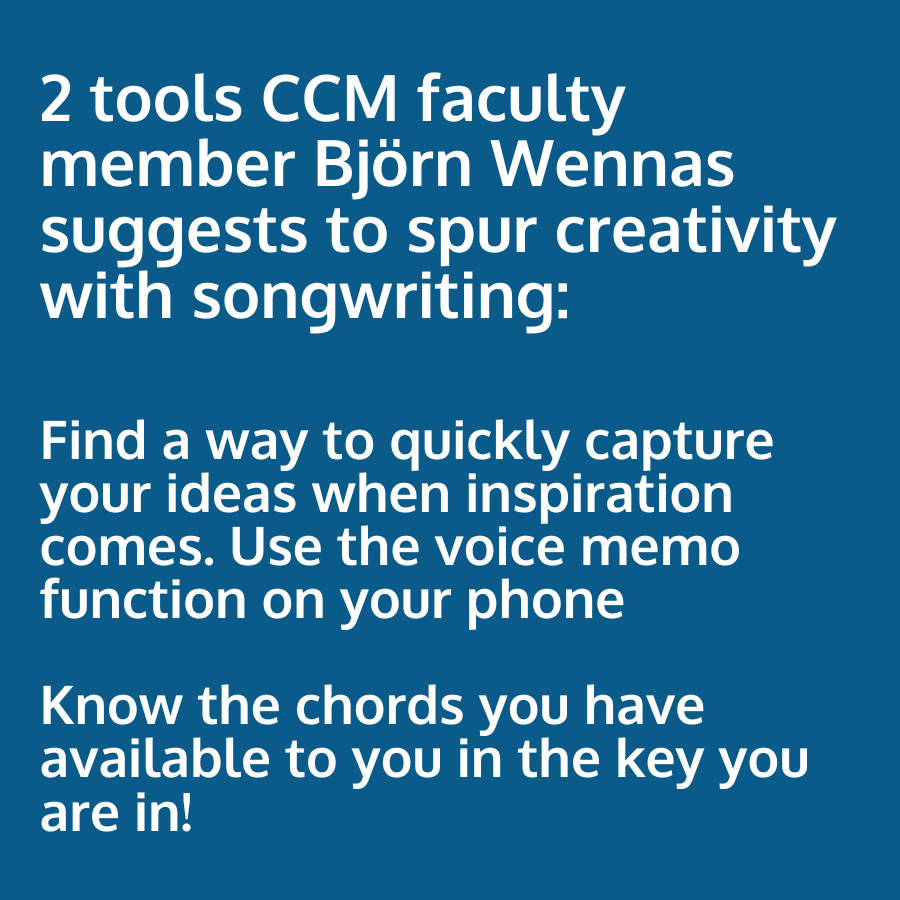
CCM welcomes Rose Hegele to our faculty
We’re pleased to welcome Rose Hegele, our new voice instructor and leader of the Concord Conservatory Girls Chorus. From beginners to professional performers, Rose will help students develop their musicianship and foundational skills, while fine tuning their singing voice and boosting their self-confidence.
As a vocal instructor, she approaches musicianship holistically, learning through intuitive and playful methods, and technique through a solutions-oriented mindset. She aims to nurture a love for music in each student, establish healthy vocal technique, and encourage authentic artistic expression.
Learn more about Rose and her amazing credentials.
Congratulations to all the CCM students who auditioned for the MMEA District Orchestra.
We want to give a special shoutout to Nick Brady, violin student of Angel Valchinov who won a district position and was invited to audition for the All-State Orchestra and Grady Flinn, viola student of Susan Gottschalk who won a district position. Bravo Nick and Grady!
A festive and invigorating December Community Sing! 
Adults and kids gathered to learn and sing the lively and festive piece, Bidi Bom written by David Eddleman. We were also privileged this time to have CCM student Cathy Weng as our rehearsal accompanist, who came prepared and assisted with the vocal lines during the hour. She said, “Overall, I found the Community Sing to be a wholesome experience. I had never really taken on the role of an accompanist for a choir, but I felt it wasn’t much different from being a pianist in a small group.”
After the Community Sing at CCM, some participants joined the families and the Concord Conservatory Girls Chorus at the Concord Tree Lighting, where the Chorus sang. Despite the chill in the air, the girls sang beautifully and were energized by the enthusiastic crowd.
Your January Listening Project Playlist!
We hope you take time out of your busy schedules to listen to and absorb this great classical playlist. January’s Playlist is in conjunction with a CCM lecture, Music of the Enlightenment, presented by CCM faculty member Fabrizio Mazzetta on Thursday, January 12th , at 7:00 pm.
Remember to use your Listening Journal for additional thought-provoking questions to think about while listening to the selections. It’s a great way to start insightful conversations with your family, friends, or music instructor!
What do Fidelity, Raytheon, and State Street have in common?
They have matching gift programs.
If your employer matches tax-deductible charitable contributions, you can double the impact of your gift to CCM! Concord Conservatory recognizes and thanks both donors and employers for this generous gesture!
Won’t you please consider giving the gift of music today?
Are you a CCM friend yet?
Join us on Instagram and Facebook to be the first to learn CCM news and more! See what music videos we like, photos we post, practice tips and articles we suggest, and new music in the music world. Be sure to bookmark the CCM Blog to never miss a new post.

“Learn the rules like a pro,” Pablo Picasso once said, “so you can break them like an artist.”
No one ever summarized the creative process more brilliantly. And no one ever practiced what Picasso preached more literally than songwriter Jimmy Webb.
In 1965, Webb was a 17-year-old piano prodigy and aspiring songwriter at California’s San Bernardino Valley College. Inspired by a ride in a hot air balloon, he got an idea for a movie script. He started with the theme song, which he wanted to compose on a piano at school.
One problem. “Because of me, all the practice rooms had signs that said, ‘No songwriting,’ ” Webb recounted in author Marc Myers’s ‘Anatomy of a Song’ series. “Composing is a process and an annoyance to music majors practicing.”
Webb broke the rule and wrote the song. And although the movie script never got off the ground, Webb’s theme song certainly did. Recorded by the 5th Dimension, ‘Up, Up and Away’ became the first of many hits that Webb wrote for artists ranging from Linda Ronstadt to Richard Harris, and eventually landed in the Grammy Hall of Fame.
Creative Tension
San Bernardino’s ‘No songwriting’ policy was an extreme example of the dynamic tension between the “learn the rules like a pro” aspect of music education and the “break them like an artist” part. But it’s important for students to experience both approaches — and CCM encourages innovative rule-breaking through programs like our Creativity Festival (see below for details).
It’s equally important that exercises in creativity — an admittedly nebulous concept — are tailored so that they are age-appropriate. For younger students, it can be as simple as having them play a song in a different rhythm.
“Music and movement” classes are another great creative catalyst for young students. Dancing helps forge a connection between the ear, the mind, and the body. If you can make music that moves people, you’re onto something.
Having kids read a lyric sheet before hearing the song can be another great “Aha!’ moment in developing the creative process. You can then take it a step further by asking them to add music to a poem.
While structure might seem to be the enemy of creativity, it’s vital to take a systematic approach to the process. You don’t want kids’ creative impulses to be all flash, with no pan. As the smartmusic blog puts it, “Often it really helps to figure out what’s inside the box before you are able to generate ideas that are outside of it.”
There’s an undeniable mystique to the idea of spontaneous brilliance — the list of artists who claim to have written a top-10 single in 10 minutes is virtually endless. But such claims give students the wrong impression about how the creative process works.
Working Musicians Create Opportunities to Be Creative 
Inspiration rarely just happens out of the blue. Successful musicians are disciplined musicians — they combine practicality with creativity. Says CCM music theory and piano instructor Manuel Garcia–Baro, whose work as a composer includes scores for films, television commercials, and video games, “I enjoy the challenge of creating a piece of music for a specific purpose.”
A simple way to introduce kids to this concept is to ask them to try writing four simple bars of music in the key of C. You can also encourage them to experiment with different approaches to melody as well as rhythm. “The more different styles you try,” Manuel says, “the more you learn about music.”
Another lesson every working musician quickly learns: It’s amazing what a deadline can do to spark creativity. “You just have to say, ‘I’m going to finish this,’ ” Manuel says. “And somehow you do.”
It sounds counterintuitive, but Manuel says a simple trick to jump-start the creative process is to set firm limits. “I’ll say, ‘For this client, I’m going to use this kind of scale and this kind of instrument,’ ” Manuel says. “Setting limits helps you get into the project faster. If you have all these different possibilities in front of you, it’s hard to choose one.” And you might have a hard time even getting the project started, never mind finished.
Find Your Creative Spirit

Projects like Creativity Festival are important for another reason: They help kids understand that you don’t have to be “gifted” to be creative. If you put in the time, keep your ears (and your mind) open, and collaborate with the right people, you’ll be amazed at what you can come up with.
A ‘creativity primer’ for young musicians includes setting aside time to jam, to try different instruments, and to collaborate with others. Or maybe to try singing or dancing. Or listening to an unfamiliar genre of music. Or, for older students, studying music theory. Or exercising or meditating (or both). Or taking up a new hobby that has nothing directly to do with music, like painting, sculpting, or photography.
Or, like Jimmy Webb, hot-air ballooning.
Creativity Is a Matter of Interpretation
Not every young music student is a budding songwriter, of course. But that’s not the point. Even the most gifted songwriters and composers need help from creative musicians to bring their compositions to life.
Take the famous songwriting team of Jerry Leiber and Mike Stoller. In another ‘Anatomy of a Song,’ installment, Stoller marveled at the way he and his late partner’s classic blues song ‘Kansas City’ took on a life of its own, recorded more than 300 times by artists that included Little Richard and the Beatles.
And no two versions were the same. The 1952 original featured Maxwell Davis’s tenor sax solo, introduced by singer Little Willie Littlefield’s shout, “All right, Max!” (“A great touch,” Stoller said). Wilbert Harrison’s 1959 shuffle version spotlighted “a twangy electric guitar solo,” while James Brown’s 1968 version was built around “a dialogue” between the backbeat and the horns. Some artists even took liberties with the title and the lyrics.
Even the composers had trouble settling on an approach. Leiber, the lyricist, envisioned a “blues shouter” style of singing, while Stoller preferred a more traditional melody. Their disagreement underscored the tension inherent in the creative process. As Stoller recalled, “We argued about the music until I final said, ‘Who’s writing the music, you or me?’ Jerry gave in.”
But as the song’s many subsequent interpretations show, there’s really no “right” answer when it comes to creativity.
On Saturday, January 28, CCM is presenting our first-ever “Creativity Festival,” an afternoon of age-appropriate workshops for both our youth and adult students. The workshops will include offerings in musical storytelling, improvisation, arranging, music and movement, and more. Designed to develop the confidence to take risks, to experiment, and problem-solve in a supportive musical environment, the workshops are free for CCM students. The day will culminate with a talk and large group activity led by Jon Hazilla, Berklee College of Music percussion professor and author. All CCM family members are invited to attend this final session in the Sanctuary.

Every serious music student eventually reaches a point when they have to decide whether they want music to be an avocation or a vocation. For Manuel Garcia–Baro, that point arrived abruptly when he was just 12 years old.
Manuel was a student at Escuela de Musica Creativa in his hometown of Madrid when a representative from a recording studio came by to recruit young singers for a Disney project. Manuel was one of just two students selected from his school.
While it was an honor to be chosen, the experience was an early lesson in the sometimes-less-than-glamorous reality of the music business. Yes, there were perks — Manuel not only got to miss school, but he also got paid for it. Mostly, though, the project was a lot of work compressed into very little time. In about a week, Manuel and three other singers recorded about 25 songs — an album of traditional children’s music and an album of 1960s standards. “And we had to do multiple takes of each song,” Manuel recalls. “They combined them because they wanted the four of us to sound like a full choir.”
Manuel used the money he earned to buy a computer and a MIDI keyboard. It was the start of a career that has taken him from Madrid to Boston, composing and producing scores for films, videogames, television commercials and other projects. But throughout that journey he has maintained a connection to his 12-year-old self by teaching kids to play, sing, and — most important of all — appreciate music.
A Simple Philosophy
In addition to serious music studies — including classical piano with the Armenian master Serouj Kradjian, along with jazz, Latin, and flamenco with Adolfo Delgado and Pepe Rivero as well as instruction in composition, arranging, and both modern and classical harmony — Manuel majored in philosophy, at Universidad Pontificia Comillas. He then majored in classical composition at the Real Conservatorio Superior de Musica de Madrid, where he studied with teachers such as Daniel Vega and Angel Huidobro.
As heavy as that all sounds, Manuel is adamant about keeping his approach to music, to his various creative endeavors, and to teaching simple. “When I make music, I try not to overthink it,” he says. “I don’t want it to sound ‘intellectual.’ I need to understand music with my ears and not with my brain. It has to be easy to listen to.”
It’s an ideal approach for working with younger students.
Lessons in Listening
Although he is an instructor in music theory and piano, Manuel realizes that “with younger kids, it doesn’t make sense to start with a lot of theory.”
In fact, it doesn’t even make sense to jump right into piano lessons. “You have to learn to listen properly before you can hope to have any understanding of how to play,” Manuel says. So he often starts out by having kids listen carefully to the pieces they’re going to play.
He may also have them sing the piece before attempting to play it, further underscoring the need to understand music with the ears instead of the brain. “You have to have an emotional reaction to the music in order to get into it,” Manuel says. “Even if you don’t completely understand a piece of music the first time you listen to it, you can get a lot out of it as long as you have that emotional reaction. Then you can listen to it multiple times and get more out of it each time.”
Once kids get a better understanding of a particular piece, then they can bring it to life by playing it  themselves.
themselves.
Making a Connection
Manuel’s philosophy of using both a methodology and materials that are suitable for young students sounds simple in theory but can be surprisingly difficult in practice. The problem, Manuel has found, is that “a contemporary repertoire can be very hard for younger students.”
His solution was, once again, ingeniously simple: He created his own. ‘A Dinosaur in My Piano’ is a book of 12 pieces that Manuel composed specifically for beginners. “The idea,” he says, “was to find music that my students could play.”
For a teacher, making that connection is the ultimate goal. “When students are engaged and they are learning and you can tell they are happy to be there — that’s the most rewarding experience,” Manuel says.